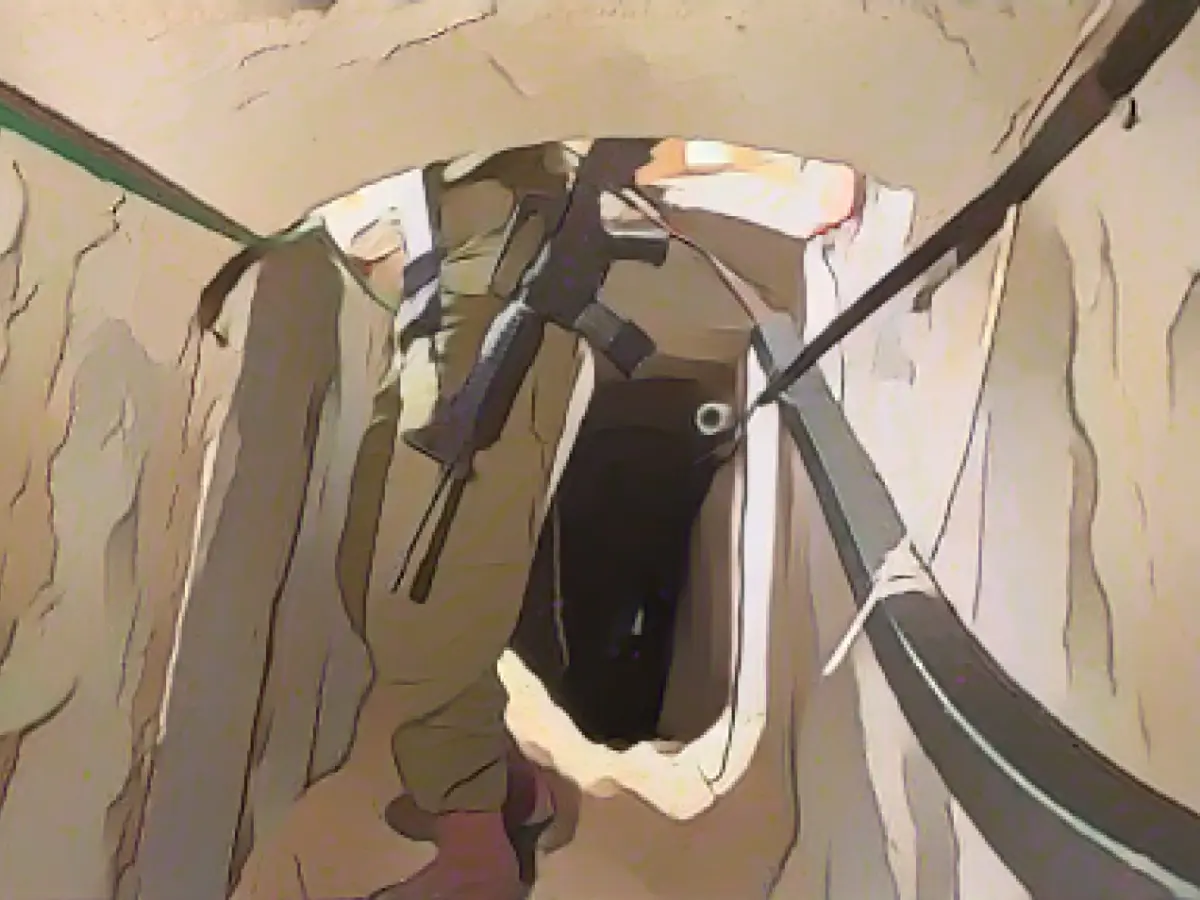The Labyrinth Beneath Gaza: A Maze of Tunnels and Controversy
Remaining in the Shadows
Hidden beneath the surface of the Gaza Strip lies a world seldom spotted by the naked eye – a network of tunnels, some stretching for miles, primarily owned by the radical Islamist group Hamas. The Israeli military has long held suspicions of terrorist activity and potential hostage situations within these subterranean passages, as reported by The Wall Street Journal. In reaction, Israeli soldiers are currently conducting tests on flooding select tunnels they believe are uninhabited by hostages, adding to the intricate tapestry of conflict and controversy surrounding the region.
Uncertainty Grows
When asked about the absence of hostages in these flooded tunnels, US President Joe Biden expressed his doubts during an interview with CNN, citing a US official. CNN further reported that the Israeli army is considering utilizing floodwaters to dismantle the extensive tunnel system, though experts have raised concerns about the potential environmental consequences.
A History of Flooding
This is not the first time the controversial tactic has been employed. On several occasions, most notably by Egypt's President Abdel Fattah Al-Sisi, tunnel systems have been flooded, particularly in response to the smuggling of weapons and extremists from Gaza to North Sinai.
Discovering and Demolishing
The Israeli army has also employed other methods to counteract the threat posed by the tunnel network. The military had discovered hundreds of tunnels surrounding the Gaza Strip, some connecting key Hamas facilities, and destroyed many kilometers of underground routes with the aid of explosives. Residential areas, including schools, and kindergartens have often been situated nearby such demolition sites.
The Tunnels' Dimensions
Despite reports of the tunnel network stretching 500 kilometers long, experts like Daphne Richemond-Barak, an underground warfare expert at Reichman University in Tel Aviv, have questioned the veracity of such claims. Harel Chorev from Tel Aviv University believed Hamas was exaggerating the length of the tunnel system to carry out a psychological deterrent.
The dimensions of some tunnels are truly astounding, with examples of concreted or electrically supplied passageways, some large enough to accommodate vehicles. These passages are reportedly between two and five meters high and one and three meters wide, and some extend as far as three-dozen meters beneath the surface.
Tunnels beneath Shifa Hospital
A controversial development involved Hamas' alleged use of a command and control center beneath the Shifa Hospital, the largest clinic in the Gaza Strip. Despite objections from international organizations and the hospital's denial, Israel's military allegedly discovered a tunnel complex concealed beneath the hospital’s premises.
Employment of Tunnels
The extensive tunnel network serves various purposes for Hamas: weapons smuggling, human migration, financial gain, and offering protection from attacks. Some hostages, possibly even some of the 135 remaining individuals from a mass abduction in 2007, may also be hidden within these subterranean passageways.
Hostages Remain Captive
Experts believe that at least some of these abductees remain in hiding, while Hamas continues to utilize the tunnel system to launch surprise attacks and protect its operatives. Previous hostage-taking situations have been described as "a spider's web" – intricate and impenetrable.
Environmental Consequences of Flooding
While the Israeli army considers the prospect of using seawater flooding to demolish the tunnel network, environmentalists have raised concerns about the impact on the already environmentally-stressed region. Contamination of drinking water, damage to the region's infrastructure, and soil degradation are significant concerns that must be addressed.
Strategic Advantages and Perils
Disabling the extensive tunnel network provides strategic advantages for Israel, while the potential release of hostages raises an added layer of complexity. However, humanitarian implications should also be considered, as the flooding of these tunnels may lead to displacement of civilians and protests from the international community.
The Consequences of the Conflict
As the struggle between Israel and the radical Hamas group in the Gaza Strip continues, the tension between humanitarian concerns and military necessity intensifies. Wading through the complex web of the conflict brings into question the consequences of each choice, making the search for a lasting peace ever more elusive.
Sources and Insights:
- The Jerusalem Post
- CNN
- INSS Analysis
- University of Birmingham Study
- "The New York Times"
- University of Tel Aviv
- WSJ Report




